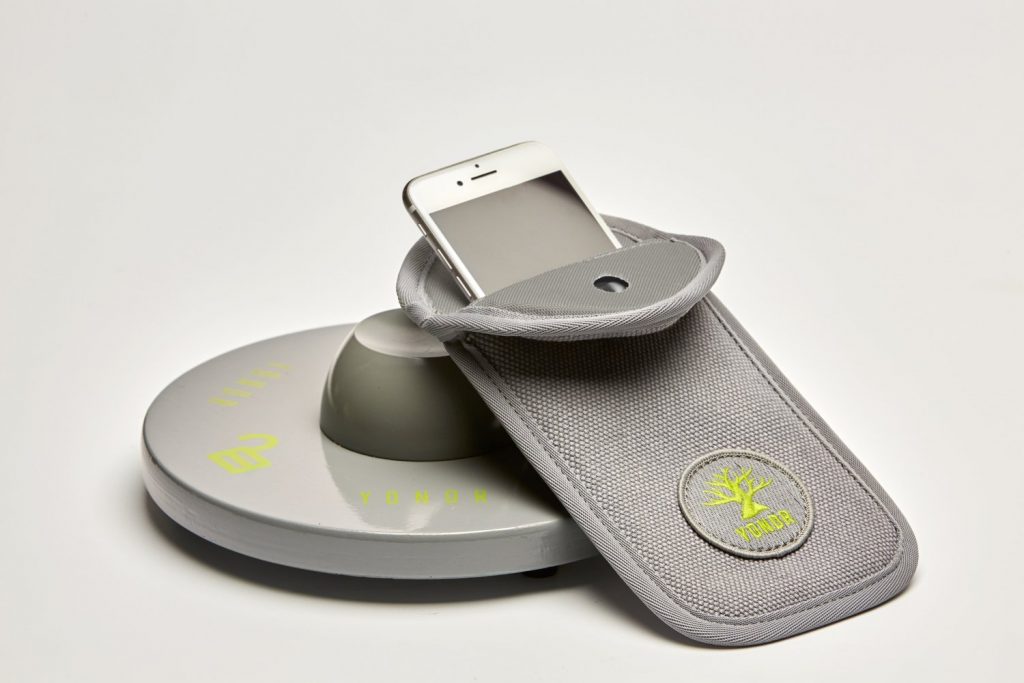
This article was originally published on mobiForge.com.
With many recent reports suggesting that we have reached "peak smartphone", we thought it would be useful to take a look at some hard data to see if the facts line up with the opinion. There is no doubt that a certain fatigue has appeared in coverage of the smartphone market in recent months. Whether it's questions around the success of the iPhone X and iPhone 8, a certain jadedness around new device releases, or persistent worries about the effects of smartphone use on society.
Smartphone backlash
A growing number of smartphone refuseniks have pushed smartphone fatigue into the realms of a fully fledged backlash. Products like Yondr - a locked pouch for your phone while you attend live events which can only be unlocked outside the auditorium at designated unlocking bases - may be a harbinger of a more restrained attitude to constant connectedness.

The international furore over Cambridge Analytica and its alleged role in selling millions of Facebook profiles to influence the 2016 US presidential race has further cast the tech industry into a negative spotlight. Virtual Assistants such as Apple's Siri, Amazon's Alexa, Microsoft's Cortana, and Google Assistant continue to worry lawmakers and parents alike with some research suggesting that children exposed to these technologies are confusing them for real people - often disintermediating a parent or guardian when they want to ask questions or get advice on matters where a parent would previously have helped.

More and more research piles up showing that excessive use of smartphones can be damaging to mental health.
Between 2011 and 2015, rates of serious depression, self-injury (such as deliberately cutting oneself), and suicide all skyrocketed among American teenagers. - Jean M Twenge
Near constant emergence of new data breaches, hacks, malware attacks, and the fake news controversy only add to the collective cooling off in the sentiment towards smartphones and even the internet itself. Concerns run deep with ominous warnings about Artificial Intelligence potentially being a threat to our very species from Elon Musk and Bill Gates and the late Stephen Hawking. To paraphrase another genius from the the non-tech world, the dream is over.
The development of full artificial intelligence could spell the end of the human race. - Stephen Hawking
With all that to contend with, is it any wonder that smartphones sales have faltered? So is it true? Have we fallen out of love with our smartphones? Will 2018 turn out to in fact be peak smartphone, a turning point in the tech industry?
Peak smartphone? - A look at the data
Let's have a look at the latest data available on smartphone shipments and usage.
First to IDC, whose February report showed that global shipments declined 0.5% in 2017, the first such reversal of the smartphone growth. More pointedly, IDC's Q4 figures show that shipments fell some 6.5% year on year, from 430.7 million units in Q4 2016 to 403.5 million units in the final quarter of 2017. That said, IDC are predicting a return to growth over 2018 and smartphone malaise may not be a truly global phenomenon just yet.
Gartner echoed these numbers, recording a 5.6% drop in the same period. Gartner cite slower feature phone upgrades, the lack of quality low cost smartphones and a tendency towards longer lasting higher quality models being chosen by less price-conscious upgraders. It's also interesting to note the increased market share of the likes of Huawei, Xiaomi and Oppo who seem well placed to provide those low cost options which may spur future growth.
| Vendor | 4Q17 Units | 4Q17 Market Share (%) | 4Q16 Units | 4Q16 Market Share (%) |
|---|---|---|---|---|
| Samsung | 74,026.6 | 18.2 | 76,782.6 | 17.8 |
| Apple | 73,175.2 | 17.9 | 77,038.9 | 17.8 |
| Huawei | 43,887.0 | 10.8 | 40,803.7 | 9.4 |
| Xiaomi | 28,187.8 | 6.9 | 15,751.3 | 3.6 |
| OPPO | 25,660.1 | 6.3 | 26,704.7 | 6.2 |
| Others | 162,908.8 | 39.9 | 195,059.1 | 45.1 |
| Total | 407,845.4 | 100.0 | 432,140.3 | 100.0 |
Source: Gartner (February 2018)
Data from DeviceAtlas covering Q4 2017 showed that many of the top smartphones in terms of web usage were at least a year or more old with 2017 releases lagging behind older releases.
| US | UK | Germany | ||||
|---|---|---|---|---|---|---|
| Rank | Device Model | Year | Device Model | Year | Device Model | Year |
| 1 | iPhone 7 | 2016 | iPhone 7 | 2016 | Galaxy S7 | 2016 |
| 2 | iPhone 7 Plus | 2016 | iPhone 6S | 2014 | iPhone 6 | 2014 |
| 3 | iPhone 6S | 2014 | iPhone 6 | 2014 | iPhone 7 | 2016 |
| 4 | iPhone 6 | 2014 | iPhone SE | 2016 | iPhone 6S | 2014 |
| 5 | iPhone 6S Plus | 2014 | Galaxy S7 | 2016 | Galaxy S6 | 2015 |
| 6 | iPhone SE | 2016 | iPhone 5S | 2016 | iPhone SE | 2016 |
| 7 | iPhone 6 Plus | 2014 | Galaxy S7 Edge | 2016 | Galaxy S7 Edge | 2016 |
| 8 | Galaxy S8 | 2017 | iPhone 7 Plus | 2016 | Galaxy S5 | 2014 |
| 9 | Galaxy S8 Plus | 2017 | Galaxy S6 | 2015 | Galaxy S8 | 2017 |
| 10 | iPhone 5S | 2013 | Galaxy S8 | 2017 | iPhone 5S | 2013 |
Source: DeviceAtlas (March 2018)
This is backed up by research from Kantar Worldpanel revealing that average lifespan of a device in the US widened to 25.3 months by the end of 2017 compared to 23.6 months in 2015.
For the web, native apps and mobile operator environments.
Even this year’s Mobile World Congress failed to light up the imagination of tech blogs, with much coverage proclaiming that this year’s crop of announcements decidedly ho-hum.
The Samsung Galaxy S9 made the biggest splash on the device launch front, even though its focus on improved camera technology seemed a little like a solution to a problem you didn't know you had. And it was perhaps telling that a relaunch of the Nokia 8110 - a feature phone with a sliding keypad from late 1990's - this time with 4G - generated as much buzz as many of the largely indistinguishable Androids on offer from other device manufacturers.

To sum up, smartphone growth may have levelled off as more of the world is now on board with the smartphone revolution. Aside from the latest speedbumps the tech industry has been experiencing, at least part of the reason for dropping sales may be the lack of compelling reasons to upgrade.
There really hasn't been any compelling new feature since (maybe) the fingerprint reader. Many flagship phones are now waterproof - one wonders has that helped to extend the longevity of the average device. Cheaper handsets from Chinese device manufacturers are certainly capturing market share as evidenced by Huawei.
So what will be the engine of growth in the future? 5G, AI and IoT continue to be touted as enablers of further innovation and growth. With all these technologies still to go truly mainstream, it may be a little premature to call peak smartphone, notwithstanding the many challenges we face to ensuring their widespread use is not abused by the services they carry.
Smartphone influence on society may not be entirely positive, but as the internal combustion engine and the television proved before them, what technological advancement is?
Feature image by Joseph Chan



